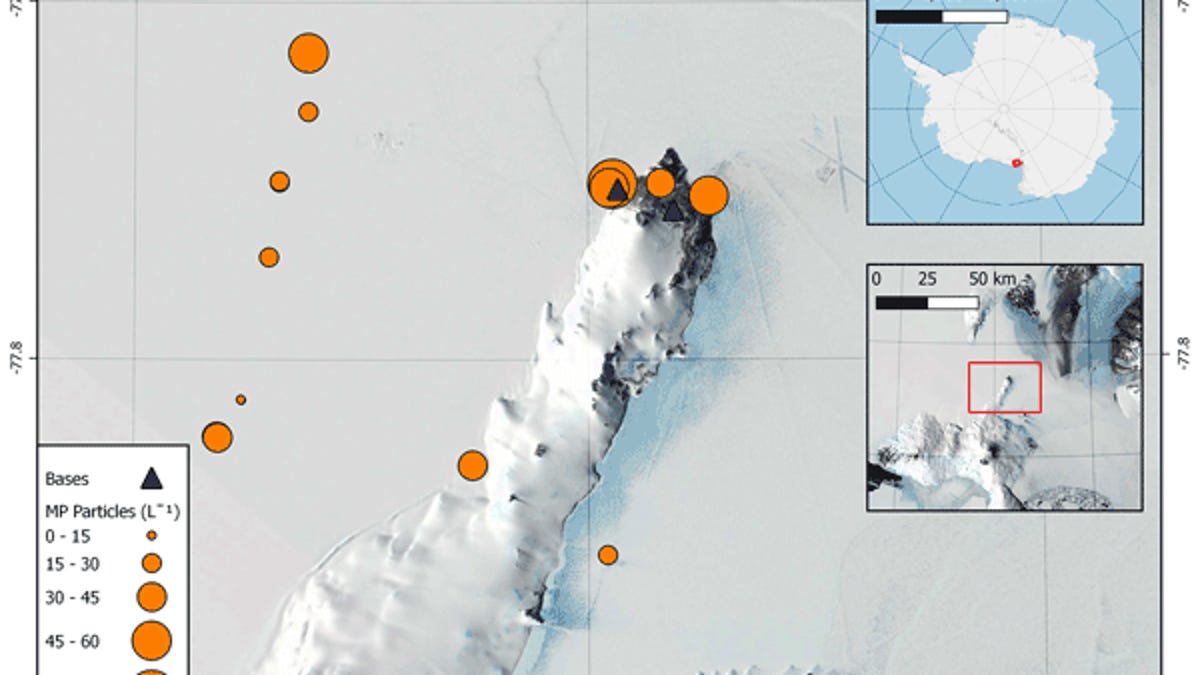Microplastics Found in Antarctic Snows for the First Time

Microplastics were found in all field samples taken from across Ross Island, Antarctica.
What's happening
Microplastics have been discovered for the first time in the snows of Antarctica, and at a higher concentration than in the surrounding seas.
Why it matters
The pollution could cause the degradation of the fragile Antarctic ecosystem and climate and affect marine life from bacteria and krill to penguins.
Microplastics have been found in the snows of Antarctica for the first time ever, according to a study published Tuesday. The finding could mean microplastics, which are formed when plastics degrade, are causing ecological damage to marine environments, climate and organisms.
Before now, data from Antarctic snows has been mostly absent, although microplastics have already been found in deep sea sediments, marine sediments, seas and surface waters of the region.
"The implications of microplastics reaching remote regions such as Antarctica are vast," said the study, published in the European Geosciences Union journal The Cryosphere. "Antarctic organisms have adapted to extreme environmental conditions over many millions of years, and the rapid environmental changes ... are threatening the unique ecosystems."
Researchers collected 19 samples between Nov. 30 and Dec. 2, 2019, from sites across Ross Island, Antarctica. Six were from locations near research stations and 13 from "remote locations with minimal human disturbance." Suspected microplastics were chemically identified at a lab in New Zealand.
Microplastics were found in all samples, with 109 particles in total confirmed across the 19 field samples.
"Microplastics may accelerate melting of the cryosphere when present on snow and ice in alpine or polar regions," the study said. "Microplastics may further influence climate by acting as cloud ice nuclei in the atmosphere."
Consumption of microplastics by Antarctic krill could also negatively impact "the entire Antarctic food chain," the authors noted.
Higher polar predators including gentoo, Adélie, chinstrap and King penguins have also been found to have microplastics in their diets. The effects of pollution have put Emperor penguins at risk as well, "with current models predicting a population decline of 81% by 2100."
For the majority of the samples, the most likely short-term source of the microplastics are winds that swept north over local bases. But for sites with a wind trajectory not passing any manned stations, the likely cause is microplastics being blown from nearby seas into the snows.
"Critically, the average concentration of microplastics found in this study are higher than in the surrounding Ross Sea and those reported in East Antarctic sea ice," the study said.

